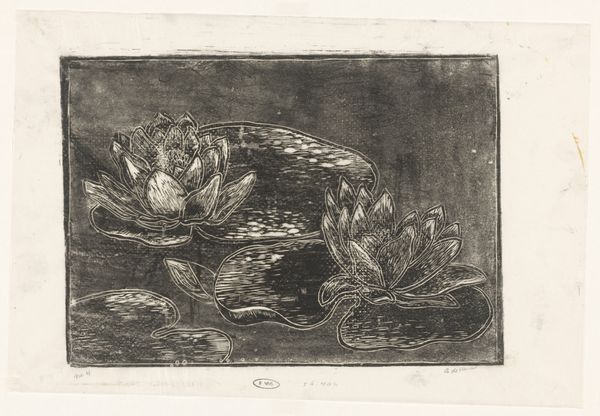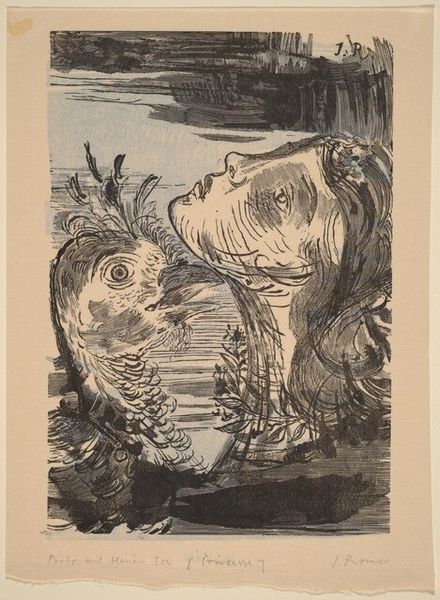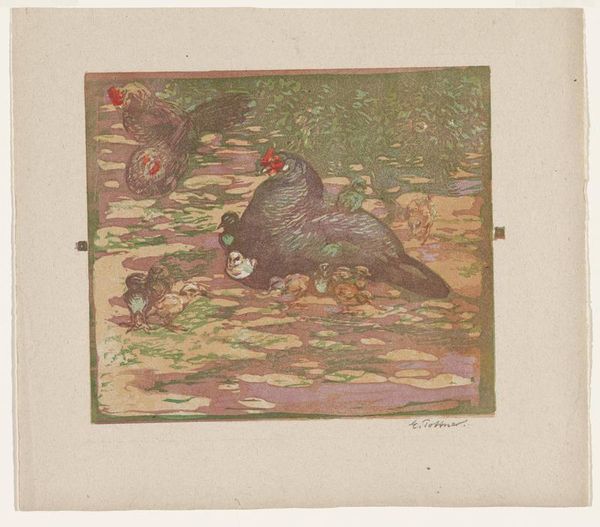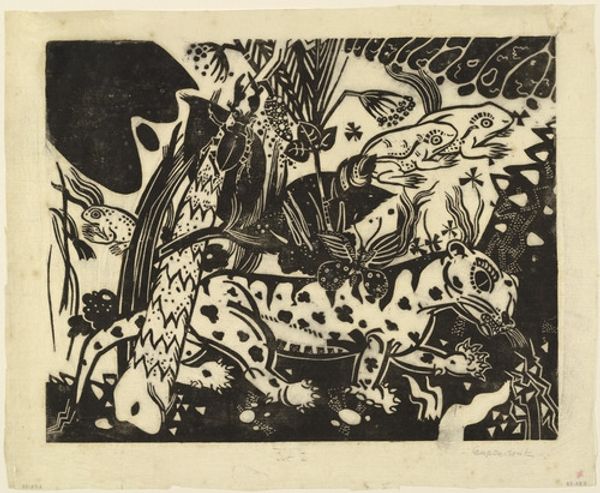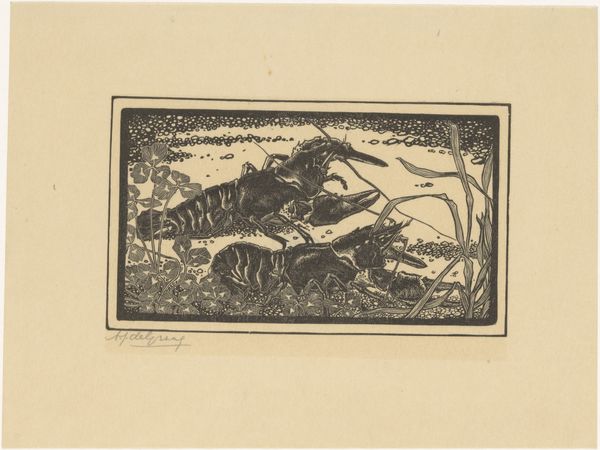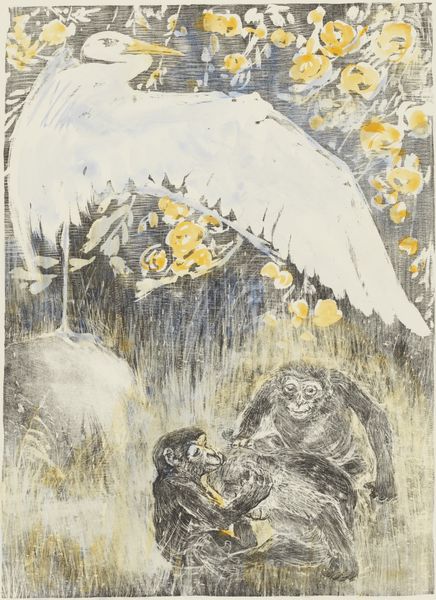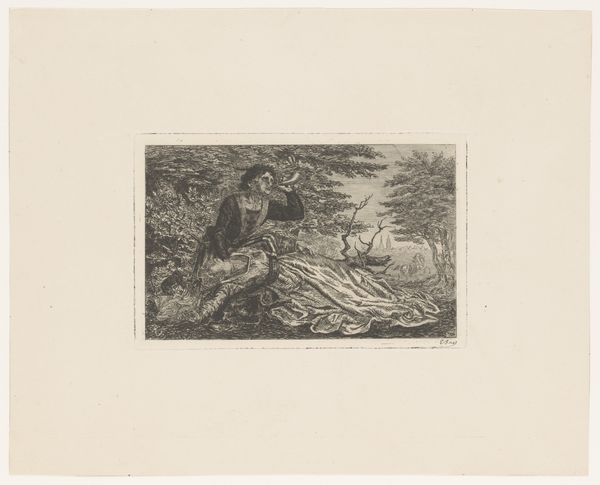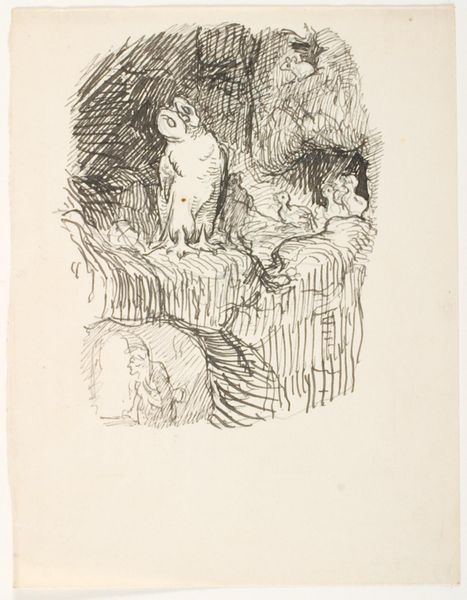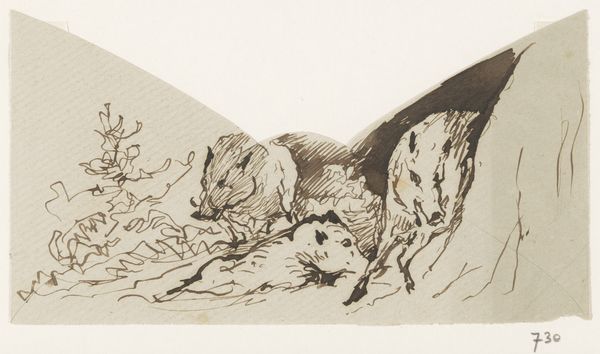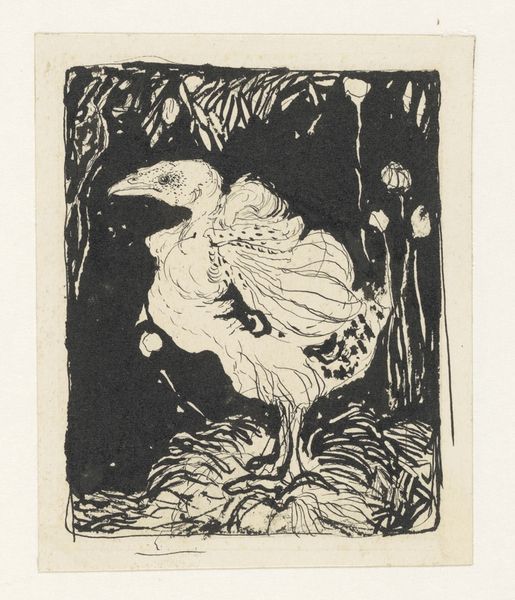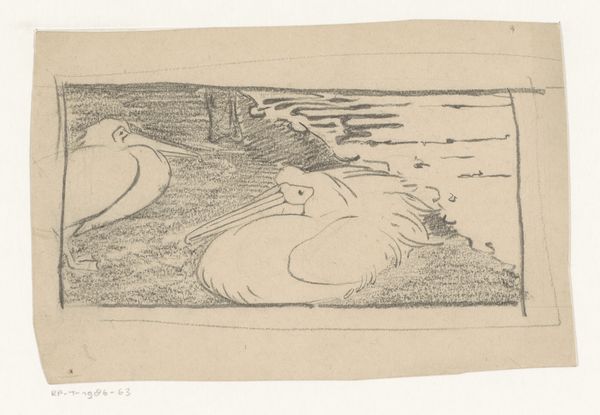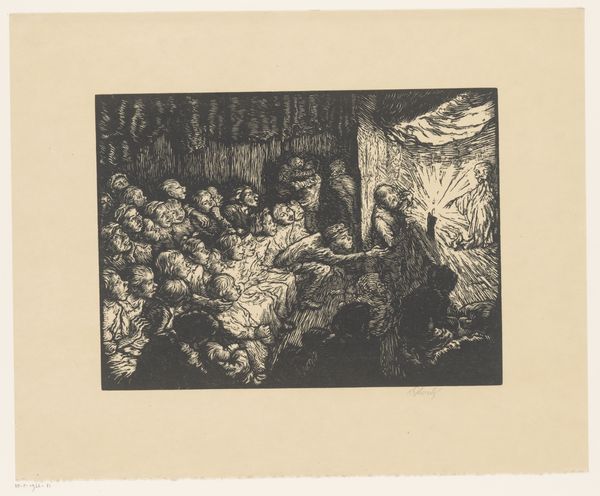
Dimensions: height 214 mm, width 259 mm
Copyright: Rijks Museum: Open Domain
Editor: Right, next up is 'Hanen en kuikens,' or 'Roosters and Chicks,' a linocut print from 1898 by Theo van Hoytema. I’m struck by its sort of flattened perspective and almost geometric patterns. It feels very stylized. What's your read on it? Curator: It’s fascinating to consider how socio-political movements and aesthetic trends intertwined at the end of the 19th century. The interest in Japanese prints, or ukiyo-e, strongly influenced artists. The emphasis on flattened planes, strong outlines, and everyday subjects challenged traditional Western academic painting. Consider the role of galleries and exhibitions in promoting this “new” vision, often aligned with a progressive worldview. How might the depiction of a seemingly simple scene like chickens become a statement? Editor: A statement about breaking from tradition, maybe? The lack of realistic perspective feels almost like a rejection of what came before. Was there a particular audience that embraced this style? Curator: Absolutely. Think about the rising middle class and the role of art in defining their cultural identity. Prints like this became accessible artworks, aligning with a desire for modern, decorative, and somewhat anti-establishment aesthetics. What’s interesting is how commercial these images could become. Editor: So, it's both a challenge to the art establishment and a clever marketing move? I hadn’t considered that angle. Curator: Indeed. The Rijksmuseum collecting it now highlights another step – legitimizing what was initially a rather subversive artistic expression. That institutional embrace impacts its meaning today. What do you think about that? Editor: I suppose that the acceptance by institutions transforms what might have been controversial or challenging into something almost...conventional. It’s an interesting cycle. I definitely appreciate how understanding the context gives so much more meaning to the image than just pretty chickens. Curator: Precisely. Seeing art as entangled with social and political forces helps us understand its lasting power.
Comments
No comments
Be the first to comment and join the conversation on the ultimate creative platform.
